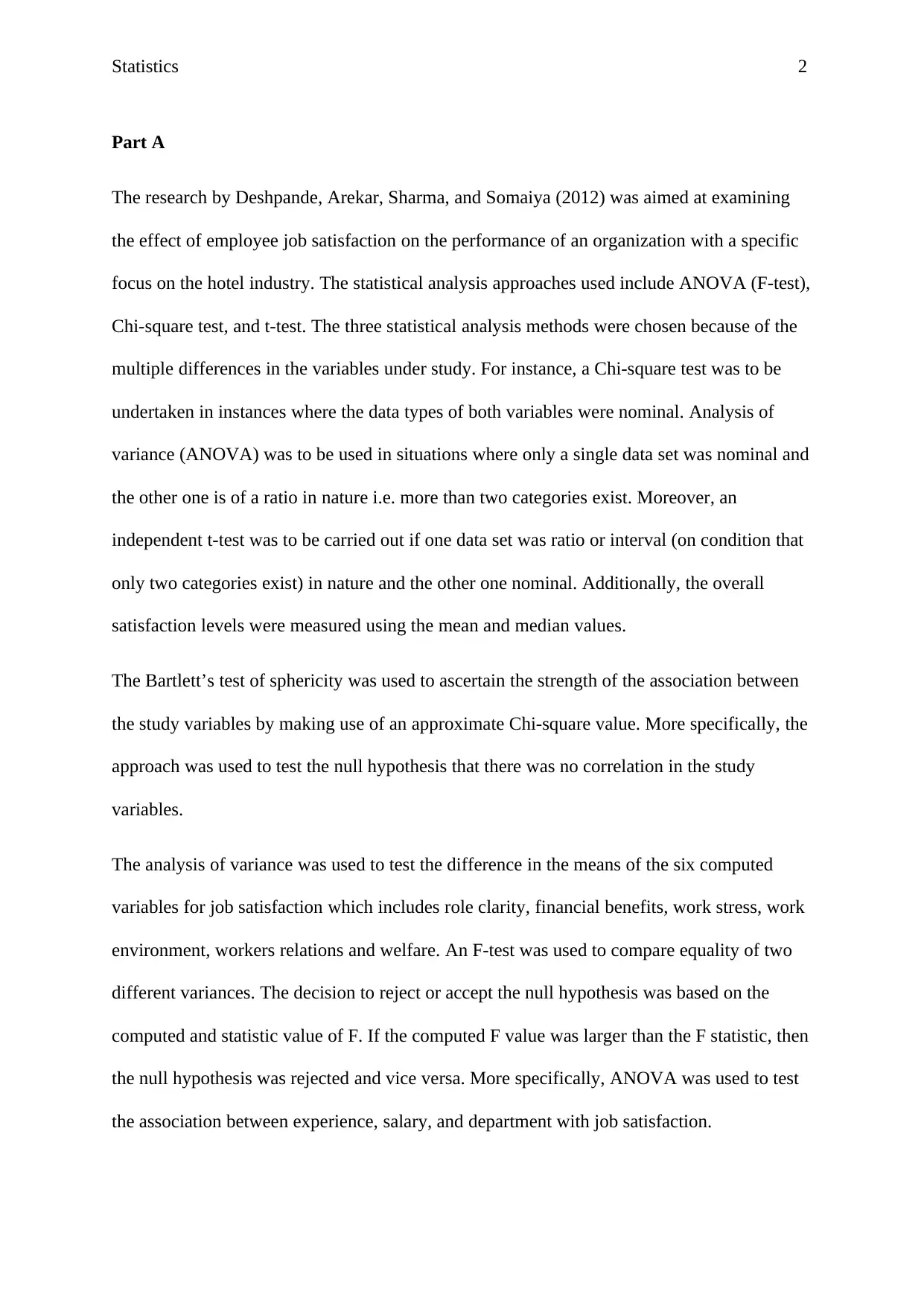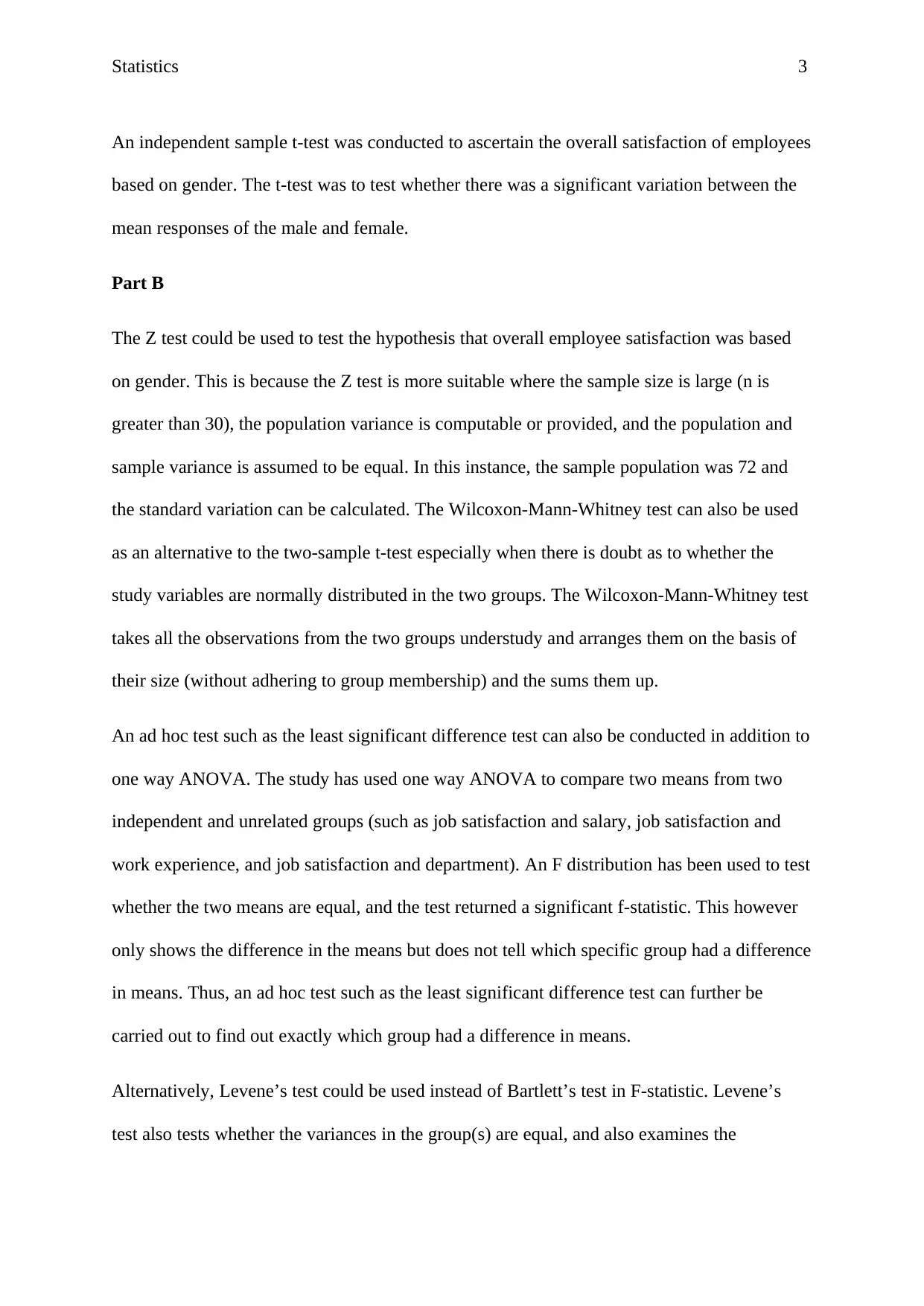A Report on Statistical Analysis: Job Satisfaction & Performance
VerifiedAdded on 2023/04/06
|5
|771
|237
Report
AI Summary
This report provides a detailed review of the statistical analysis employed in a research paper focusing on the impact of employee job satisfaction on organizational performance within the hotel industry. The original study utilized ANOVA (F-test), Chi-square tests, and t-tests, selected based on the nature of the variables under examination. The report explains the rationale behind using each test, such as Chi-square for nominal data and ANOVA for comparing means across multiple categories. It also discusses the use of Bartlett’s test of sphericity to assess variable associations. Furthermore, the report suggests alternative statistical methods, including the Z test for large sample sizes, the Wilcoxon-Mann-Whitney test for non-normally distributed data, and ad hoc tests like the least significant difference test to refine ANOVA results. Levene’s test is proposed as an alternative to Bartlett’s test. The report concludes by advocating for the use of descriptive statistics like mean and standard deviation to provide a clearer understanding of participant responses.
1 out of 5












![[object Object]](/_next/static/media/star-bottom.7253800d.svg)